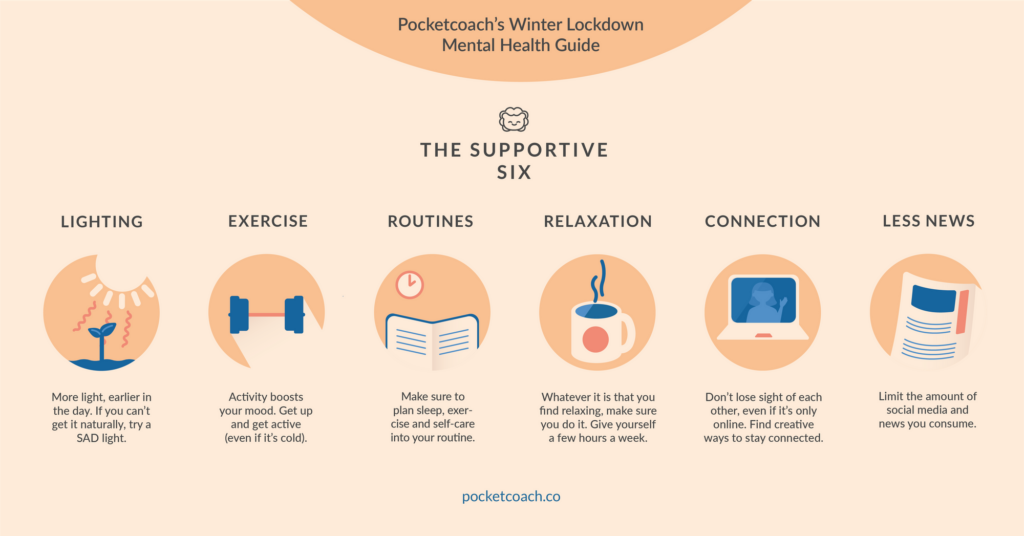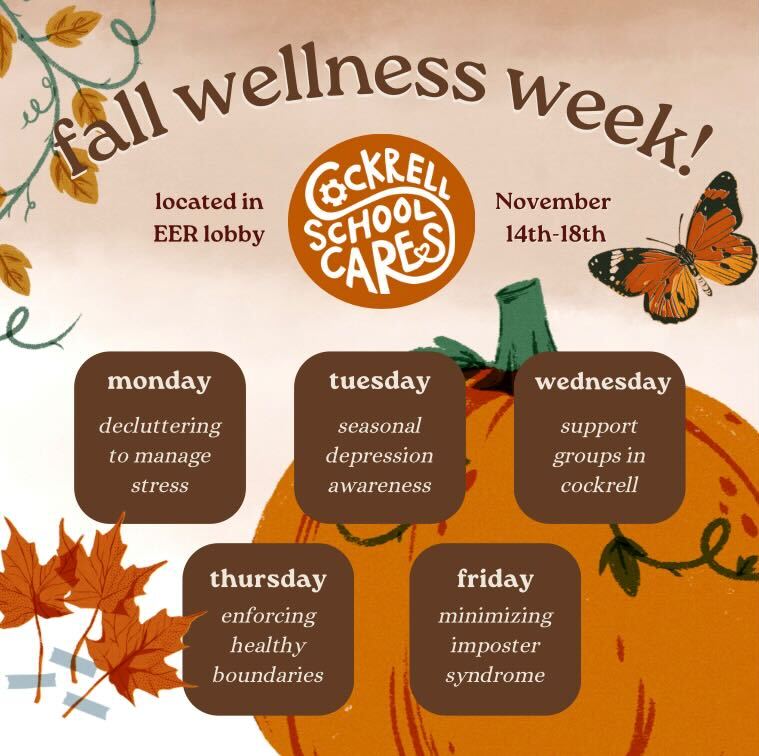Seasonal Depression Awareness
What is Seasonal Depression?
Seasonal depression (or seasonal affective disorder (SAD)) is a type of depression triggered by a change in seasons, usually when Fall starts. A mild version of SAD is known as the “winter blues.” It’s normal to feel a little down during colder months because you may be stuck inside, and it gets dark early. About 10-20% of Americans may get a version of the winter blues.
Symptoms
- Sadness, feeling depressed most of the day, almost every day.
- Anxiety.
- Carbohydrate cravings and weight gain.
- Extreme fatigue and lack of energy.
- Feelings of hopelessness or worthlessness.
- Trouble concentrating.
- Feeling irritated or agitated.
- Limbs (arms and legs) that feel heavy.
- Loss of interest in usually pleasurable activities, including withdrawing from social activities.
- Sleeping problems (usually oversleeping).
- Thoughts of death or suicide.
Causes
| Theory | Explanation |
| Biological clock change | When there’s less sunlight, your biological clock shifts. This internal clock regulates your mood, sleep and hormones. When it shifts, you’re out of step with the daily schedule you’ve been used to and can’t adjust to changes in daylight length. |
| Brain chemical imbalance | Brain chemicals called neurotransmitters send communications between nerves. These chemicals include serotonin, which contributes to feelings of happiness. If you’re at risk of SAD, you may already have less serotonin activity. Since sunlight helps regulate serotonin, a lack of sunlight in the winter can make the situation worse. Serotonin levels can fall further, leading to depression. |
| Vitamin D deficiency | Your serotonin level also gets a boost from vitamin D. Since sunlight helps produce vitamin D, less sun in the winter can lead to a vitamin D deficiency. That change can affect your serotonin level and your mood. |
| Melatonin boost | Melatonin is a chemical that affects your sleep patterns and mood. The lack of sunlight may stimulate an overproduction of melatonin in some people. You may feel sluggish and sleepy during the winter. |
| Negative thoughts | People with SAD often have stress, anxiety and negative thoughts about the winter. Researchers aren’t sure if these negative thoughts are a cause or effect of seasonal depression. |
Management & Treatment
| Treatment | Explanation |
| Light therapy | Bright light therapy, using a special lamp, can help treat SAD. |
| Cognitive behavioral therapy (CBT) | CBT is a type of talk therapy. Research has shown it effectively treats SAD, producing the longest-lasting effects of any treatment approach. |
| Antidepressant medication | Sometimes, providers recommend medication for depression, either alone or with light therapy. |
| Spending time outdoors | Getting more sunlight can help improve your symptoms. Try to get out during the day. Also, increase the amount of sunlight that enters your home or office. |
| Vitamin D | A vitamin D supplement may help improve your symptoms. |
Seasonal affective disorder is real, treatable
Read The Daily Texan’s article on SAD HERE
Dr. Ginny Maril, Associate Director for Clinical Services at the UT Counseling and Mental Health Center, says students can find relief through basic self-care.
“Am I drinking enough water? Am I eating food that my body likes? Am I getting sleep? It comes down to those basic things where you can physiologically care for yourself because our minds and our bodies are always talking to each other,” Dr. Maril said.
Socialization is another critical component of SAD symptom treatment. It may seem tempting for students to hibernate when they feel extra low, but being around others and feeling connected will help ease SAD symptoms.
The Daily Texan
Managing the Winter Blues
Read more about combating the winter blues HERE written by UT Health Austin
Learn more about SAD lamps HERE


